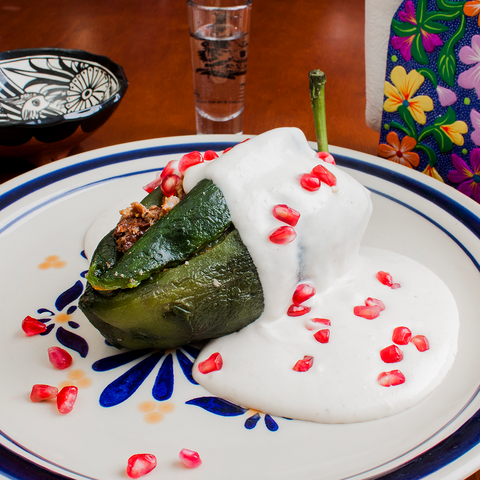Artificial sweeteners, which is the best option?
Written by: Fernanda Alvarado
3 minute read
February 11, 2019
Artificial sweeteners allow people with type 2 diabetes to indulge in their guilty pleasures without worrying about blood sugar spikes.
Artificial sweeteners are designed for those who want to reduce their sugar intake or find an alternative to refined or natural sugars. In Mexico, though there’s a high percentage of people living with different types of diabetes, the population in general loves sweets. What would be better than having sweets that maintain their sugary taste but without the actual sugar? Artificial sweeteners allow people with type 2 diabetes to indulge in their guilty pleasures without worrying about blood sugar spikes.
Few calories and a lot of sweetness
Obesity and some heart conditions, which are linked to developing type 2 diabetes, are directly related to the consumption of large amounts of sugar. The use of sweeteners with few or no calories could be a good option. However, these little packets aren’t suitable for everyone. Pregnant women, breastfeeding women, children, people suffering from migraines and epilepsy are susceptible to the adverse effects that this type of products can cause.
Different colors and different sweeteners
Sugar substitutes come in colored packets, this is because each color refers to the type of sweetener they contain.
The Food and Drug Administration (FDA) recognizes the use of aspartame, saccharin, sucralose, neotame, acesulfame-K and stevia as safe. Recently, Advantame and Swingle fruit extract, also called Luo Han Guo, were added to the list.
Pink – Saccharin
- Brand names include Sweet and Low, Sweet Trin, Sweet’N Low and Necta Sweet.
- It was discovered and used for the first time in 1879, it has been used in food and drinks for more than a century.
- It is 200 to 700 times sweeter than table sugar and it doesn’t contain calories.
- It causes controversy regarding toxic effects and its connection to cancer (especially bladder), obesity and increased body weight.
- In May 2000, the U.S. Department of Health and Human Services eliminated saccharin from its list of cancer-causing chemicals, despite sufficient evidence of carcinogenicity in animals.
Blue – Aspartame
- Brand names are Nutrasweet, Equal and Sugar Twins.
- It was approved for the first time for use in 1981.
- It is approximately 200 times sweeter than sugar and contains calories.
- You can reduce its sweetness in preparations that involve long cooking or baking time.
- People who suffer from phenylketonuria (PKU), the inability to split the amino acid phenylalanine, cannot consume products containing aspartame. Because of this, beverages and foods containing aspartame must state it on their labels.
Yellow – Sucralose
- Also known as Splenda and is considered a general purpose sweetener for beverages, gum, baking and frozen dairy products.
- It was approved for the first time for use in 1998.
- Approximately 600 times sweeter than sugar.
- Unlike other substitutes, it is stable when heated and can, therefore, be used in baked and fried products.
- In December 2016, a study was published which warned about the effects of sucralose on thyroid function, appetite increase and weight gain. This research was carried out in rats.
- It is the only non-caloric sweetener made from sugar and considered the only substitute for zero-calorie sugar.
Green – Steviol Glycosides
- Also known as Stevia, Truvia and Pure Via.
- It is a natural sweetener extracted from the leaves of Stevia rebaudiana bertoni.
- It’s 200 to 400 times sweeter than sugar.
- Stevia sweeteners are safe. The maximum allowable intake, of Steviol, is 4 mg/kg of body weight.
- In general, these packets are mixed with another type of sweeteners, mainly polyalcohols, which can cause gastrointestinal discomfort if consumed in excess.
Other Artificial Sweeteners
Acesulfame Potassium (Ace-K):
- Known as Sunnett and Sweet One.
- Found on labels as Ace-K, acesulfame K, or acesulfame potassium.
- Is 200 times sweeter than sugar and is combined with other sweeteners.
- Approved in 2003 as a sweetener for general purposes and as a flavor enhancer, except in meat and poultry.
- Suitable as a sugar substitute in baked goods and used in frozen desserts, candy and beverages.
Advantame:
- No known brand name.
- Is used as a general purpose flavor enhancer and sweetener in foods with the exception of meat and poultry.
- Is 20,000 times sweeter than table sugar and is a good sugar substitute for baking.
Luo Han Guo Fruit Extracts:
- Comes from monk fruit, a plant native to Southern China.
- Brand names include Nectresse, Monk Fruit in the Raw, and PureLo
- Is 100 to 250 times sweeter than sugar.
Neotame:
- Also known as Newtame.
- Approved for use as a general sweetener and flavor enhancer, except in meat and poultry.
- Is 7,000 to 13,000 sweeter than table sugar.
- Suitable for as a sugar substitute for baking.
Beware of the dose
Although scientific opinion is quite divided, it is important to promote the consumption of natural foods and only use sweeteners when necessary and at the lowest concentration possible, whether they are natural or artificial sweeteners, with or without calories.
It is not only about counting calories, but to take care of the quality of the food. Be an informed consumer and be sure to read the labels; there are many products that misrepresent their makeup of their contents and add sugar or mix of two or more substances.

Author
Fernanda Alvarado
Fernanda Alvarado Alvarez is a nutrition specialist and diabetes educator. She lives in Mexico City. Since 2011 she has been working on the creation of editorial content related to nutrition, health and sports for different brands and media. Fernanda is the author of the Manual "Aprendiendo a Vivir con Diabetes" (Learning to Live with Diabetes). Fernanda also collaborates in the Menu section for the newspaper called El Universal. You can find more from Fernanda on Twitter @Ferrnanda, on her YouTube channel Bien Comer, on Facebook BienComerMx and on her blog BienComer.com.mx
Related Resources

News Highlights The American Academy of Pediatrics (AAP) released new guidelines against the ketogenic diet...
Read more

Feeling festive? Chiles en nogada is the ideal dish to share during the holidays, or...
Read more

Life gets busy. From working 40+ hours a week to running errands and attending different...
Read more

